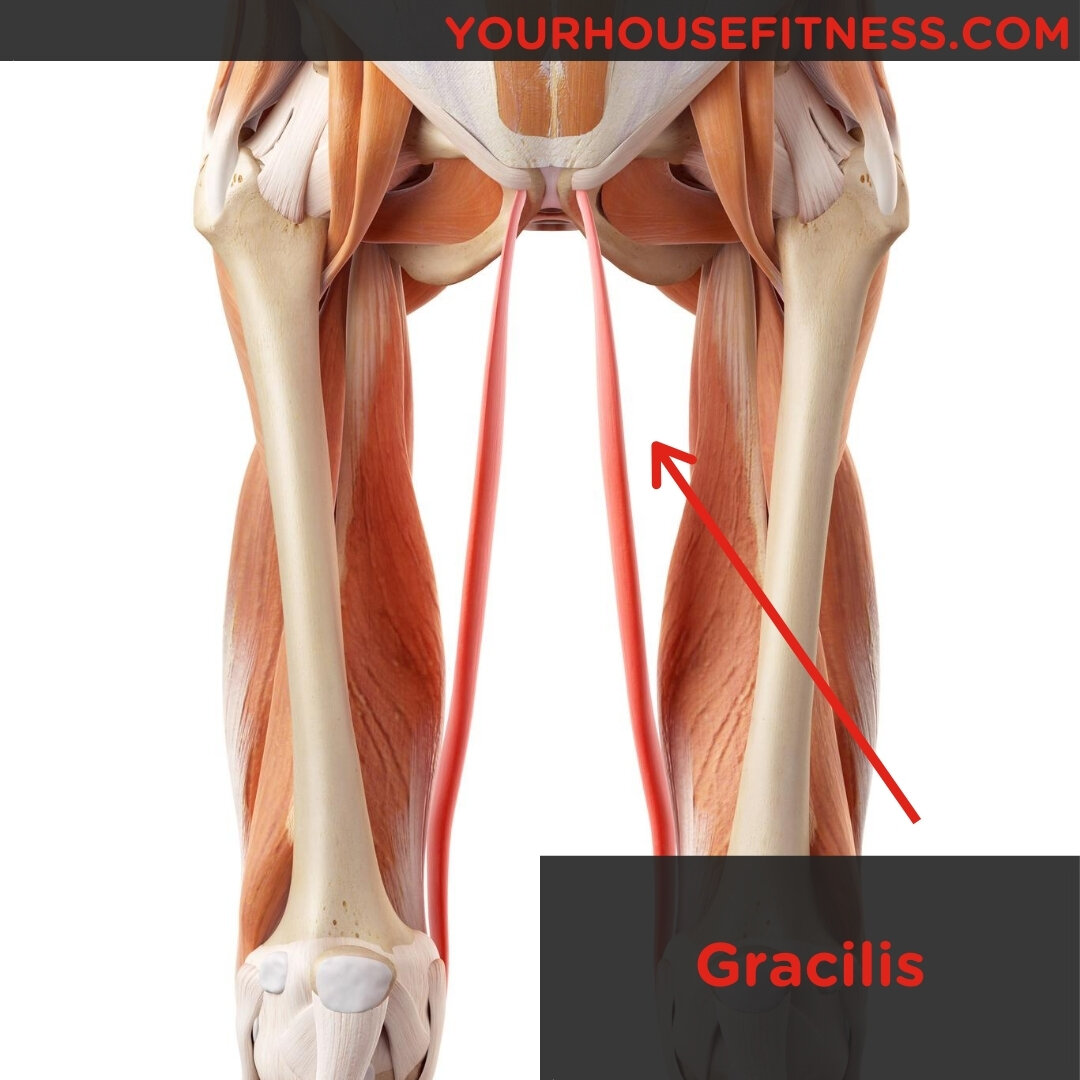Muscle Breakdown: Gracilis
Table of Content
What Is the Gracilis Muscle
The Gracilis is a thin and long muscle that belongs to the medial thigh. A fun fact about the Gracilis muscle is that its tendon can be used for reconstruction of torn ligaments and tendons in the body, without impairing the quality of life of the individual. Keep reading to learn everything about the Gracilis muscle including its function, anatomy and how you can activate the Gracilis muscle.
Gracilis Muscle & Cadaver
Gracilis Muscle Function
The primary function of the Gracilis muscle is to adduct the thigh. Since the Gracilis muscle crosses both the hip and knee joint, the Gracilis also plays a role in flexion and internal rotation of the leg.
Gracilis Muscle Origin And Insertion
Gracilis Origin
The Gracilis muscle originates from the Pubis, Inferior Pubic Ramus and the Ischial Ramus.
Gracilis Insertion
The Gracilis muscle inserts into the medial side of the proximal Tibia, to form the Pes Anserinus.
Gracilis Muscle Innervation
The Obturator Nerve innervates the Gracilis muscle.
Gracilis Muscle Action
An example of an action that the Gracilis muscle performs in the body is helping to balance the trunk during activities such as walking. Additional actions that the Gracilis muscle is responsible for, or contributes to include:
Walking
Running
Kicking
Helping the hamstrings to flex the knee
Keeping the participant secure during horseback riding
Various sports such as soccer, hockey and football
Gracilis Muscle Pain
You can experience pain in the Gracilis muscle for a few different reasons. It is important to remember that there is a difference between muscle pain and muscle soreness. If you feel like the Gracilis muscle is sore (most likely between 24-48 hrs after a workout) this is okay! It means that the Gracilis muscle has worked hard and needs some time to grow and recover.
On the other hand, experiencing pain in the Gracilis muscle can be indicative of an injury to the muscle, and should be examined by a doctor or therapist. For instance, muscle spasms can cause pain in the Gracilis muscle. A spasm in the Gracilis muscle can be caused by overuse, improper nutrition levels in the body or a neurological condition. Furthermore, the Gracilis muscle can be strained, which can be a very painful condition.
Gracilis Muscle Strain
A strain to the Gracilis muscle is painful and often results in limited range of motion. A Gracilis muscle strain can be caused by a sudden overstretch of the muscle, or from an overuse injury. Symptoms of a Gracilis strain include pain, bruising in the area of the muscle, swelling and muscle weakness. There are different grades of muscle strains, ranging from a grade 1 strain (mild) to a grade 3 strain (severe, tearing of the muscle).
You should see your doctor if you suspect that you have strained the Gracilis muscle so they can give you a correct diagnosis. Treatment for a strain to the Gracilis muscle includes ice, heat, compression and rest. Additionally, exercises to rehabilitate the Gracilis and treatments such as ultrasound or electrical stimulation can help to improve the recovery time of the Gracilis. Remember to follow your recovery plan in order to get back to sport as quickly as possible!
Gracilis Muscle Stretch
There are different stretches that you can perform that will engage the Gracilis muscle. Here are a few Gracilis muscle stretches below:
Standing Stretch
Standing Stretch
Stand with your feet greater than hip width apart and legs straight. Bend forwards at the hip to bring the hands down to the ground. As you gain flexibility, you will be able to spread the legs further and reach the ground if you currently cannot. Hold this position for 30 seconds or longer.
Deep Side Lunge
This stretch is a progression from the one listed above. Begin in the same position as the standing stretch. Bend one knee so that your weight has shifted to one side and extend the remaining leg as far out to the side as you can. You can bring your hands down to the floor to help stabilize the body. Hold this position for 30 seconds and then switch legs.
Gracilis Muscle Exercises
See below for some exercises that will help to strengthen the Gracilis muscle:
Side Leg Raises
Groin Squeeze
Standing Hip Adduction
Seated Hip Adduction
Side Leg Raises
Lie down on your side with your legs extended. Your body should form one straight line. You can support the upper body by resting on the elbow of the arm that is in contact with the ground, or bend at the elbow so that your hand is cradling the head. Lift the top leg up towards the sky, while keeping the leg straight. Slowly lower the leg back to the starting position. Repeat this movement for 3 sets of 10-15 reps and then switch sides.
Groin Squeeze
Lie down on your back on the floor with a towel or soft ball in between the legs just above the knee. Squeeze your legs together so they are compressing the towel or ball. Hold this position for 2 counts and then release. Repeat this movement for 3 sets of 10-15 reps.
Standing Hip Adduction
Secure a resistance band around a support at ankle height and wrap the remaining end around the ankle closest to the support while standing sideways. Step away until there is some tension in the band. Swing the foot under resistance in front and across of the body and then return to the starting position. Repeat this movement for 3 sets of 10-15 reps and then switch legs.
Seated Hip Adduction
This exercise is performed using a machine in the gym. Have a seat in the machine and select your weight. Engage the adductors so that you are bringing the knees towards each other and closing the legs together. Repeat this movement for 3 sets of 10-15 reps.



